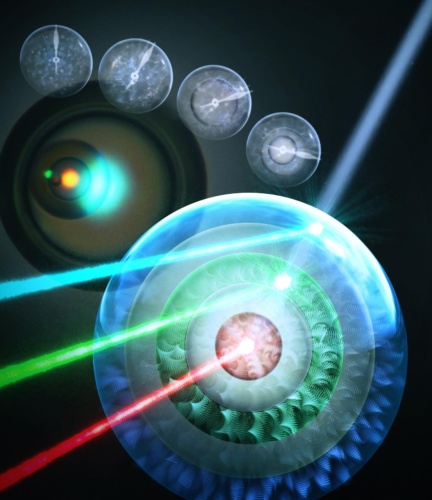The breakthrough, made by a team at the Korea Institute of Science and Technology (KIST), relates to the development of a simple method for creating multi-layered liquid crystals that could be used as the basis tweaking the optical characteristics of materials.

When a special additive called chiral dopant is mixed with the liquid crystal material commonly used in display devices, the liquid crystal molecules rotate spontaneously to form a spiral structure known as "cholesteric liquid crystal.” This material can exhibit colour without the addition of pigments. An additional property known as circular polarisation means that it’s possible to make colours appear and disappear by changing certain polarisation conditions.
The KIST team has developed a method to produce materials consisting of several layers of cholesteric liquid crystal, enabling the development of materials that can exhibit two or more different characteristics at the same time.
To achieve this, they added a cosolvent that dissolved in both oil and water as a way to mix organic alcohol, a hydrophilic moisturising agent, and the hydrophobic liquid crystal material for all three substances to become evenly mixed together.
Scottish researchers develop artificial tongue to detect fake whisky
Fluorescent 3D printed microstructures could foil the forgers
This mixture was then emulsified in water to form microemulsion drops. With the exchanges occurring among the cosolvent, moisturising agent, and water molecules through the surfaces of the emulsion drops, this resulted in a separation of the hydrophobic and hydrophilic layers.
Depending on the initial mixing ratio of the substances, they separated into multiple layers ranging from one to five, and these layers could be freely controlled.
Also, with the phase separation occurring continually within each emulsion drop, the concentration of the chiral dopant inside the liquid crystals changed, resulting in multiple structural colours.




Mandate sets 2030 date for use of sustainable aviation fuel
A quick read through the document...